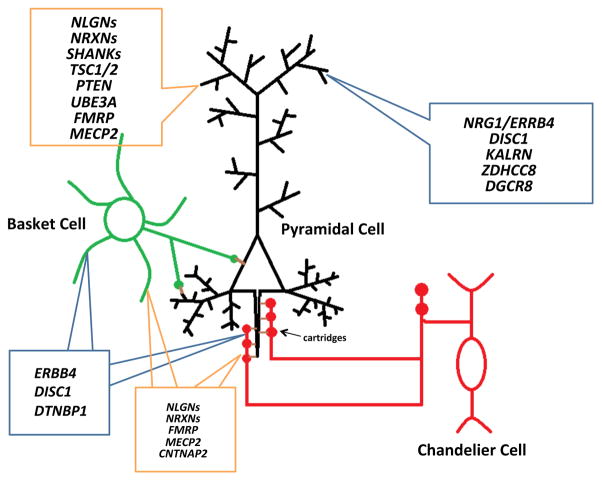Fig. 2.
Parvalbumin-containing interneurons regulate pyramidal cell firing. Both basket (green) and chandelier cells neurons (red) contain parvalbumin and have fast-spiking electrophysiological properties. Chandelier cells have long linear axon terminals called cartridges that synapse onto the axon initial segment of pyramidal neurons (black) while basket cell axons target the cell bodies and proximal dendrites of pyramidal neurons. Due to the strategic location of their synapses, both subtypes greatly influence the generation and timing of a pyramidal cell’s action potentials. The contents inside the blue and orange boxes respectively denote key SCZ and ASD-associated genes involved with dendritic spine or parvalbumin interneuron pathology, as discussed in this review.

